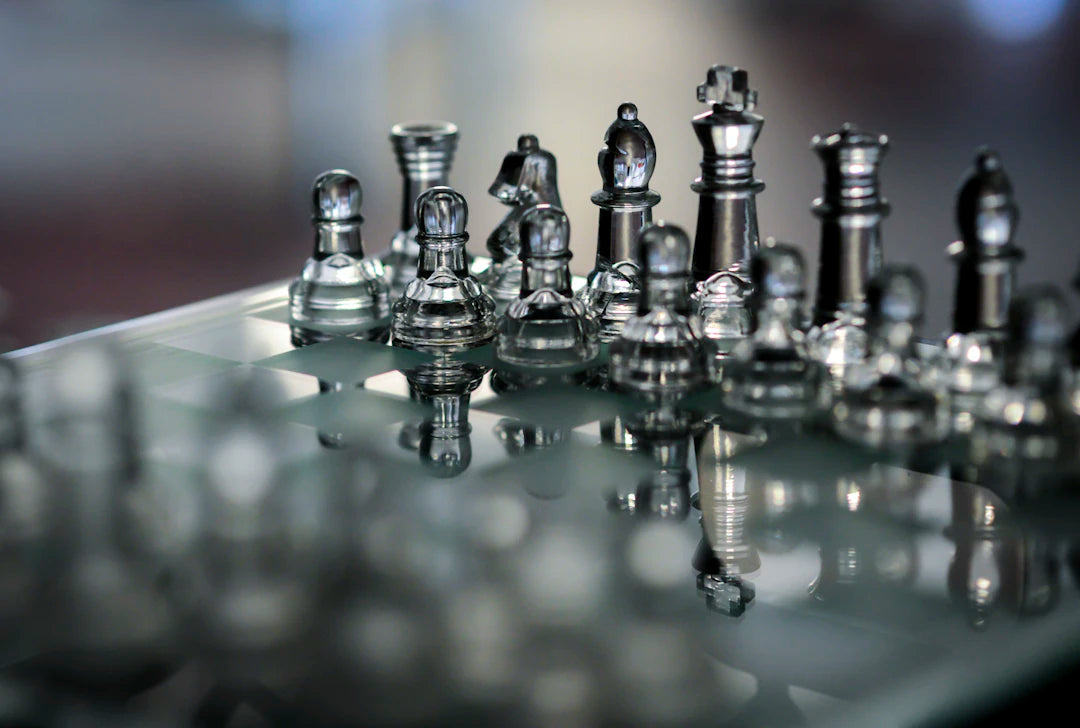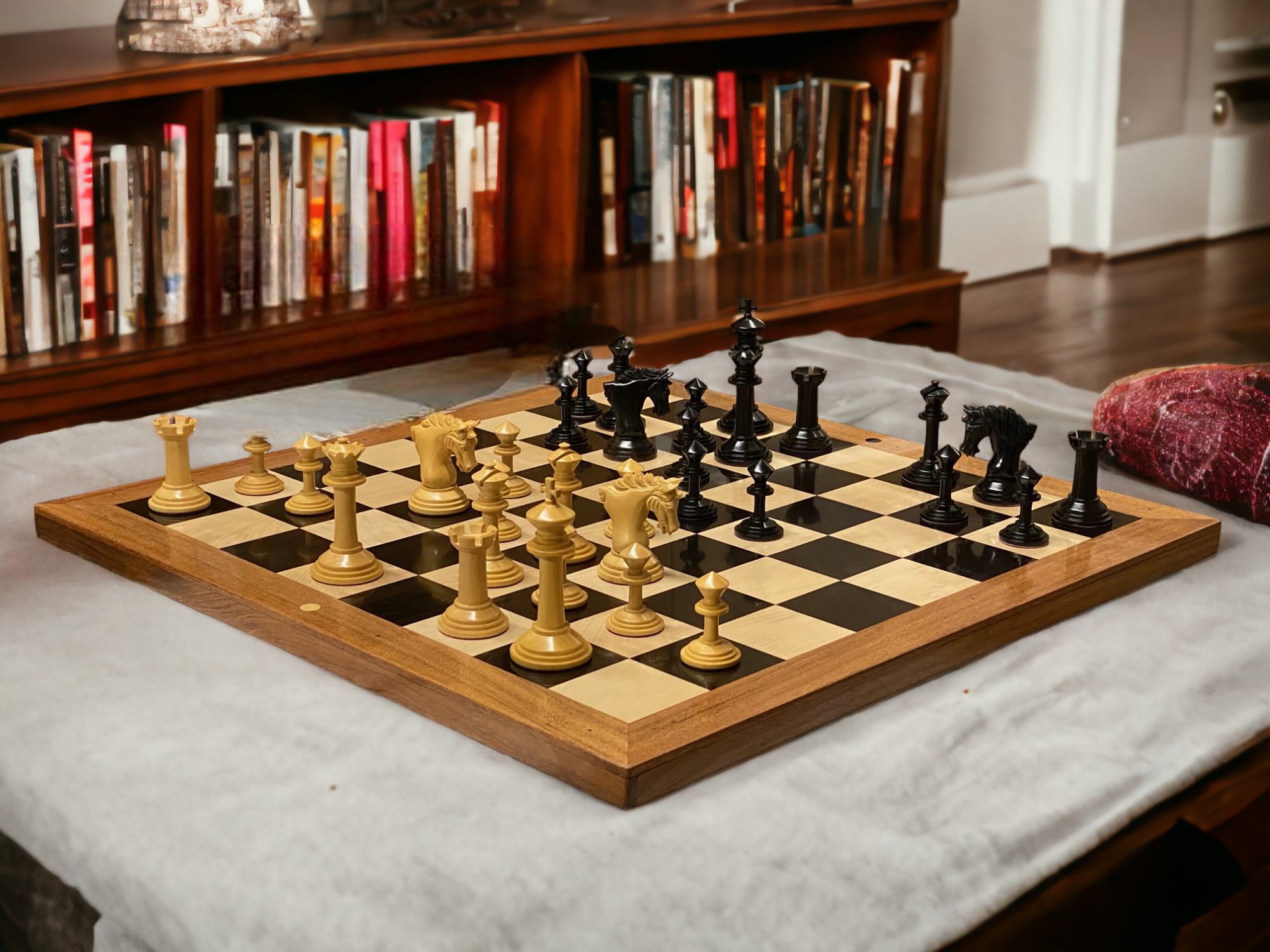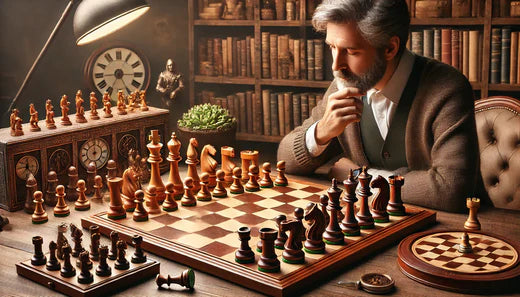Chess is not merely a game of strategy; it is a rich tapestry of culture and artistry, vividly illustrated in its pieces. As you explore chess, you’ll discover a variety of styles that command respect and intrigue. From the time-honoured classical designs to the sleek lines of contemporary interpretations, each chess piece carries its unique story. In this article, we will dive deep into the various styles of chess pieces, with a particular focus on the British design chess set, highlighting how these different styles can enrich your chess experience.
The Origin of Chess Piece Designs
The design of chess pieces has evolved over centuries, influenced by various cultures and movements. The earliest known chess pieces date back to India, around the 6th century AD. As the game spread through Persia to Europe, distinctive styles emerged.
The Classical Era
Classical chess pieces are often regarded as the embodiment of traditional artistry. Typically crafted from wood or ivory, these pieces feature intricate details and beautiful finishes. The main characteristics of classical chess pieces include:
- Detailed Sculpting: Each piece often showcases elaborate designs, highlighting the skill of the craftsman.
- Symbolic Shapes: The pieces' shapes are traditional, with each piece identifiable by its unique form - think king with a crown and bishops with mitres.
- Material Quality: Many classical sets are made from premium materials, contributing to their weight and sturdiness.
One of the most prominent examples of classical style is the Staunton chess pieces, named after the English chess player Howard Staunton. These pieces became the standard for tournament play and remain a favourite among both casual and professional players.
The Allure of Contemporary Designs
With the rise of modern aesthetics, contemporary chess pieces aim to redefine traditional forms while maintaining their fundamental purpose. The designs oftentimes diverge significantly from classical forms, embracing minimalism and modern art influences.
Defining Features of Contemporary Chess Pieces
Contemporary chess pieces can be recognised by various defining features, such as:
- Sleek Lines: Modern pieces tend to favour clean, sharp lines over intricate designs.
- Unique Materials: Innovations in material technology mean you may find pieces made from glass, plastic, or even metal.
- Abstract Forms: Contemporary sets often break conventions, with pieces that may not resemble traditional representations.
A modern British design chess set, for example, might reflect British craftsmanship, combining contemporary materials and minimalist shapes while maintaining the tournament-ready usability of traditional chess pieces.
Classical vs. Contemporary: A Comparison
While both classical and contemporary chess pieces have their merits, understanding their differences can help you make the best choice for your chess experience.
Aesthetic Appeal
The classical chess pieces possess a charm of nostalgia, pulling you into centuries of tradition with their ornate designs. The tactile care that goes into their crafting speaks to a deep respect for the history of the game. Conversely, contemporary pieces provide a modern flair, willing to push the boundaries of artistic expression and aesthetics.
Functional Performance
In gameplay, functionality is crucial. Classical chess pieces have a standard weight and balance, which many players find advantageous during competitive play. Contemporary designs may be lighter or unevenly weighted, changing the dynamics of movement, which could be a deciding factor for competitive players.
Collector’s Value
Classical chess sets tend to hold or increase their value over time, especially those made from premium materials. On the flip side, though contemporary pieces can be striking and stylish, their value may not see the same appreciation, given that they are often driven by trends.
Cultural Significance
Classical styles often reflect the distinctive artistic and cultural heritage of their time. Contemporary pieces, meanwhile, embody modernity, breaking the conventional norms and engaging with a new aesthetic language that can sometimes resonate more with the younger generation.
Choosing the Right Chess Set for You
When it comes to selecting a chess set that suits your style and ethos, here are a few things to consider:
- Your Playing Style: Reflect on whether you prioritize tradition or a modern twist. Are you a classicalist at heart, or do you see yourself as a modernist?
- Display Considerations: If the chess set doubles as a statement piece in your living room, opt for styles that reflect your home décor.
- Material Preference: Think about the weight and durability of the materials used in the chess pieces. Would you prefer wooden, acrylic, or perhaps even metal pieces?
- Budgetary Constraints: Decide what fits within your financial reach. While there is a broad spectrum of pieces available, both classical and modern, always have a budget in mind.
The Rise of Themed Chess Sets
In today’s chess culture, themed chess sets are becoming increasingly popular, merging different narrative aspects to create conversational pieces. Fans of pop culture, history, or fantasy can find chess sets featuring characters from their favourite franchises. Themed sets can alternate between classical and contemporary styles, appealing to various demographics.
However, it’s essential to consider whether a themed product offers the same functional playability as a standard British design chess set or a traditional Staunton set. Sometimes, thematic creativity might risk compromising the overall performance of the pieces.
Maintaining and Caring for Your Chess Pieces
Regardless of the style you choose, maintaining your chess pieces can ensure they last for generations. Here are some tips to help care for your chess collection:
- Regular Cleaning: Dust your chess set regularly to prevent the buildup of grime. Use a soft, dry cloth, especially on wooden pieces to avoid scratches.
- Protective Cases: Consider storing pieces in protective cases when not in use, particularly for valuable classical sets.
- Avoid Direct Sunlight: Exposure to direct sunlight can warp and fade your pieces. Store your chess set in a shaded environment.
Taking these basic precautions will keep your chess pieces looking pristine and ensure a longer lifespan for your beloved game.
Final Thoughts: Your Journey Awaits!
The beauty of chess lies not only in the game itself but in the pieces that enable the strategies, tactics, and creativity. Whether you resonate more with classical craftsmanship or contemporary design, your choice will undoubtedly reflect your personal style and appreciation for this intellectual pursuit. Selecting the perfect British design chess set or a contemporary piece can transform your playing experience, bringing an added joy to your games.
As you forge your journey into the world of chess, allow the aesthetics of your pieces to inspire you to think strategically, play passionately, and maybe, just maybe, challenge the status quo of your chess skills. No matter the style you choose, what truly matters is the connection to the game and the moments that unfold with every move.



